When you think of whiskers, you might first imagine a cat or a dog. Many mammals have these hairy appendages. In fact, most of them do. Did you know that mammals are not the only animals that have whiskers? Read on to find a list of animals with whiskers and learn about whiskers, which animals have them, and why they do.
What Are Whiskers?
Whiskers are stiff hairs that generally grow out of an animal’s face. In mammals, whiskers are also called vibrissae. These specialized hairs are rooted deeply in the skin. Whisker follicles are packed with nerves and blood vessels, making whiskers very sensitive. They often grow around the snout, but in some animals, they grow around the eyes or even inside the nostrils. Whiskers can be short or very long, depending on the species growing them.
Why Do Animals Have Whiskers?
In many species, whiskers act as feelers that help animals sense their surroundings. They pick up vibrotactile information to send to the brain, allowing animals to feel vibrations. Their positioning on the front of the face helps keep the animal’s head and some of its most important body parts safe. It can also allow the animal to navigate its environment and track prey, even in dark conditions.
Which Animals Have Whiskers?
Scientists believe that early mammalian ancestors had whiskers. While the placement and structure of whiskers diversified as species evolved, most mammals retained their whiskers. Today, human beings are among the few mammal species that do not have whiskers. Mammals are not alone in having whiskers! Certain birds and fish have whisker-like appendages that help them make sense of their environment.
Here is a complete list of animals with whiskers in no particular order.
1. Carnivorans
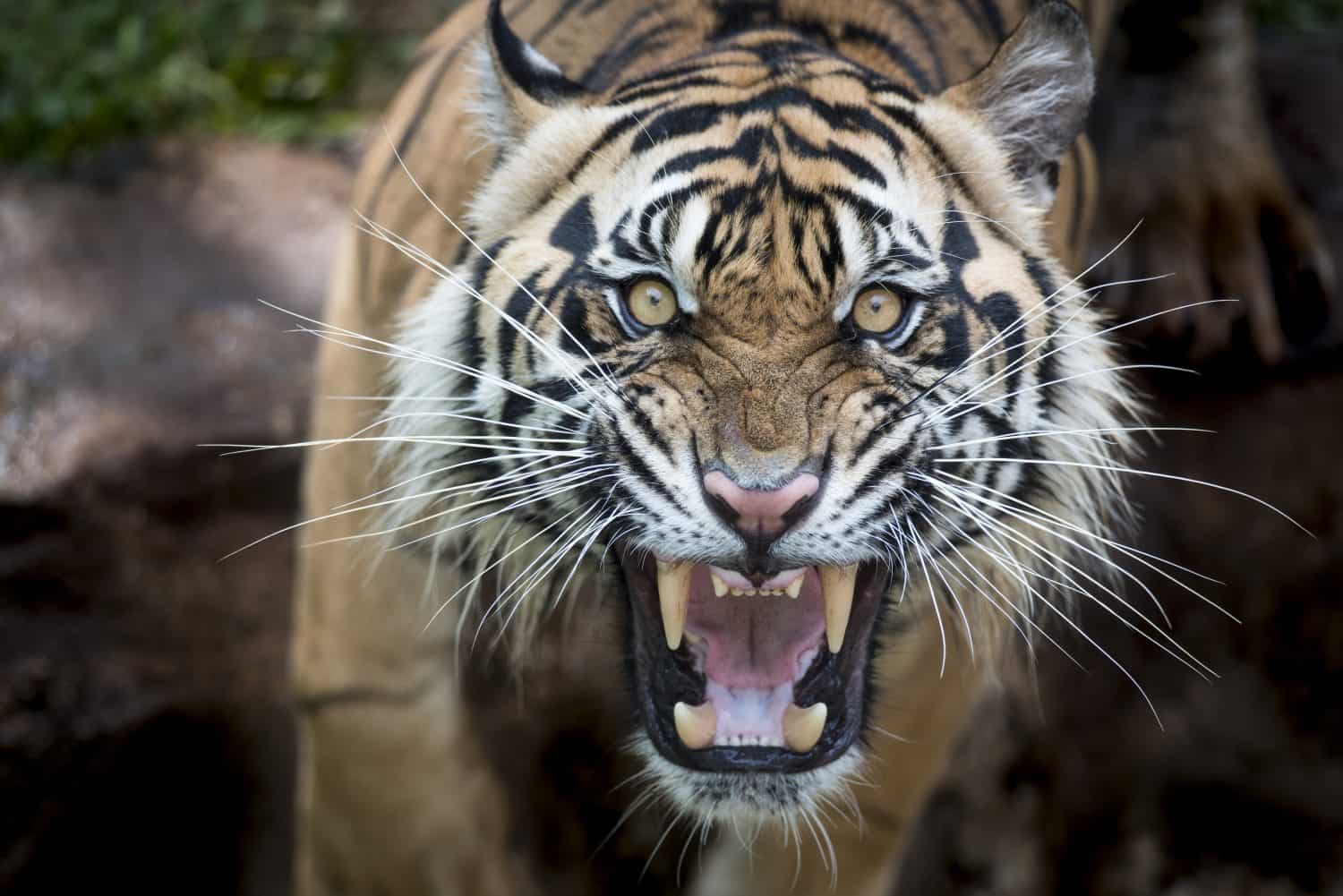
To kill their prey, tigers like to bite the neck. After biting, tigers press their highly sensitive whiskers onto the neck of the prey to determine if there is still a pulse.
©dptro/Shutterstock.com
All animals that belong to the mammalian order Carnivora have whiskers. This includes bears, seals, walruses, mongooses, otters, and more. Most of them have whiskers on their faces, and many also have them on their legs. When vibrissae grow out of the legs, they are called carpal whiskers. Like facial whiskers, carpal whiskers help an animal feel their way through dark environments.
Many carnivorans rely on their whiskers to help them hunt. Seals use their very sensitive whiskers to track the movement of prey through the water, especially in deep waters, where there is less light. Raccoons have whiskers on their front toes that they can use to identify objects before touching them with their skin. Cat whiskers are so sensitive that they can sometimes suffer from whisker fatigue if their whiskers are overstimulated. This can happen if their water or food dish is not wide enough.
2. Rodents
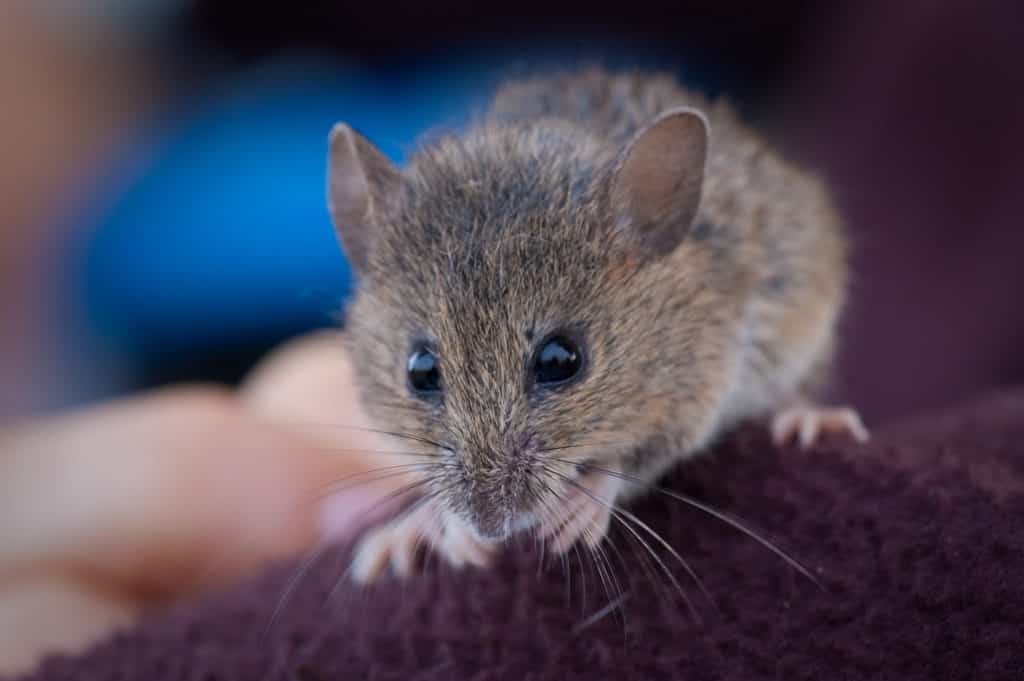
Mice cannot see nearby objects well, so they rely on their whiskers to understand what is close to them.
©Pacific Southwest Region USFWS/CCBY2.0 – License
Whisker touch is an incredibly important sense to rodents, which use their whiskers to find food and to get information about their environment. They also use whiskers to keep their balance and to map out the world around them. Mice and rats sweep their whiskers back and forth to find objects. They can move the whiskers on their snout’s left and right sides independently. Squirrels have four sets of whiskers—one around their eyes, one on their nose, one under their chin, and one on their throat. Chinchillas have very long whiskers that make up for their poor eyesight. A chinchilla’s whiskers can grow to be at least one-third of their total body length.
3. Bats
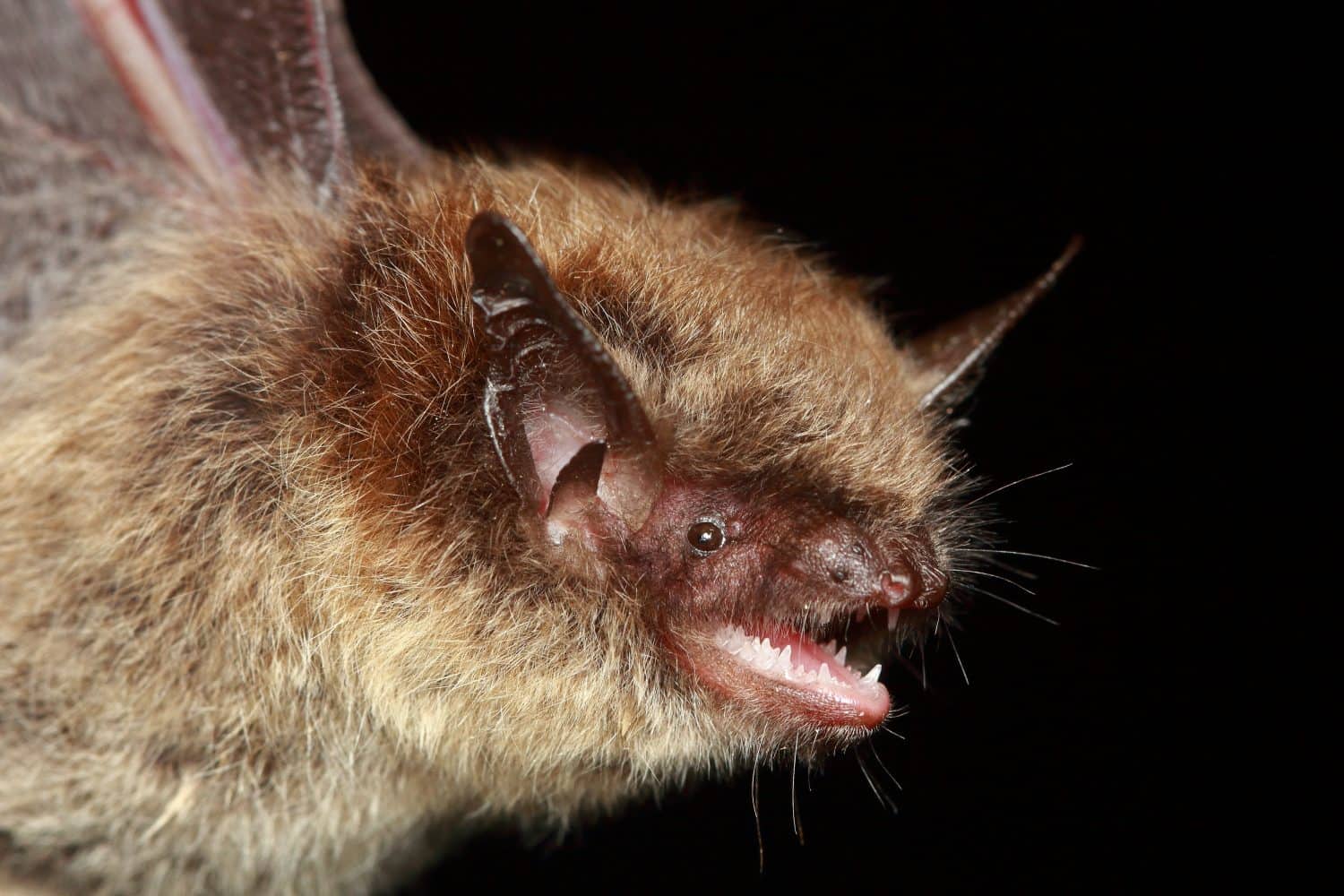
Bats are nocturnal, and whiskers help them navigate through their night world.
©zdenek_macat/Shutterstock.com
We know that bats use echolocation to navigate during flight, but did you know that they also use their whiskers? Scientists have found that whiskers help bats move and maneuver through the air with agility. Whiskers help them find and eat their food, too. Nectar-feeding bats use their whiskers to spatially assess flowers so they can quickly drink the nectar while they hover.
4. Cetaceans
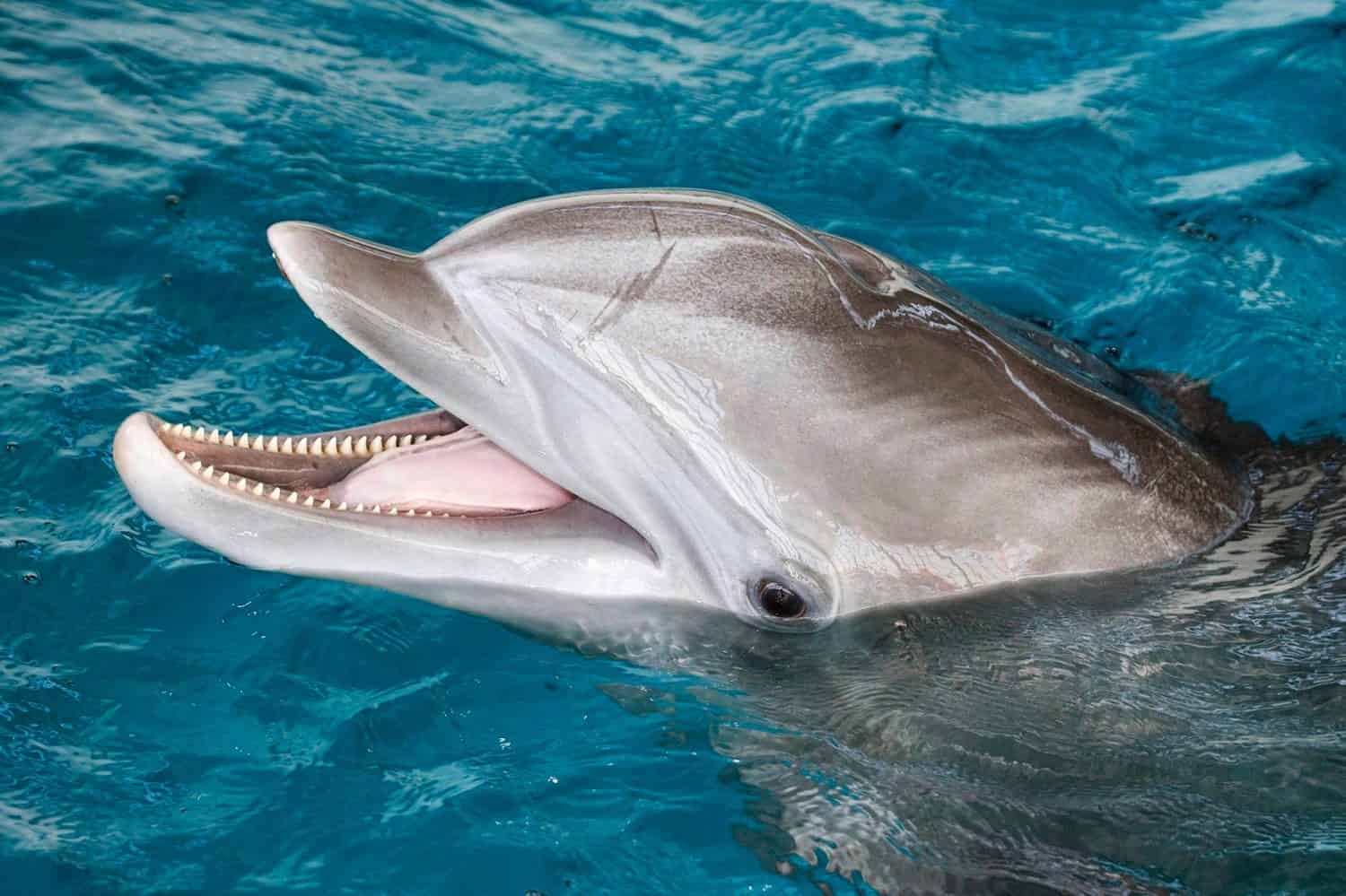
A thin line of whiskers can sometimes be seen on the snout of baby dolphins.
©Igor_Photographer/Shutterstock.com
You may be surprised to know that smooth-faced dolphins and other cetaceans have whiskers! Dolphins and other toothed whales are born with whiskers that usually fall off before they reach maturity. The exception is the Amazon river dolphin, which keeps the bristly whiskers that grow at the end of its snout. Sensitive hairs grow out of the bumps on the heads of humpback whales and other baleen whales, helping them to sense their underwater environment.
5. Ungulates
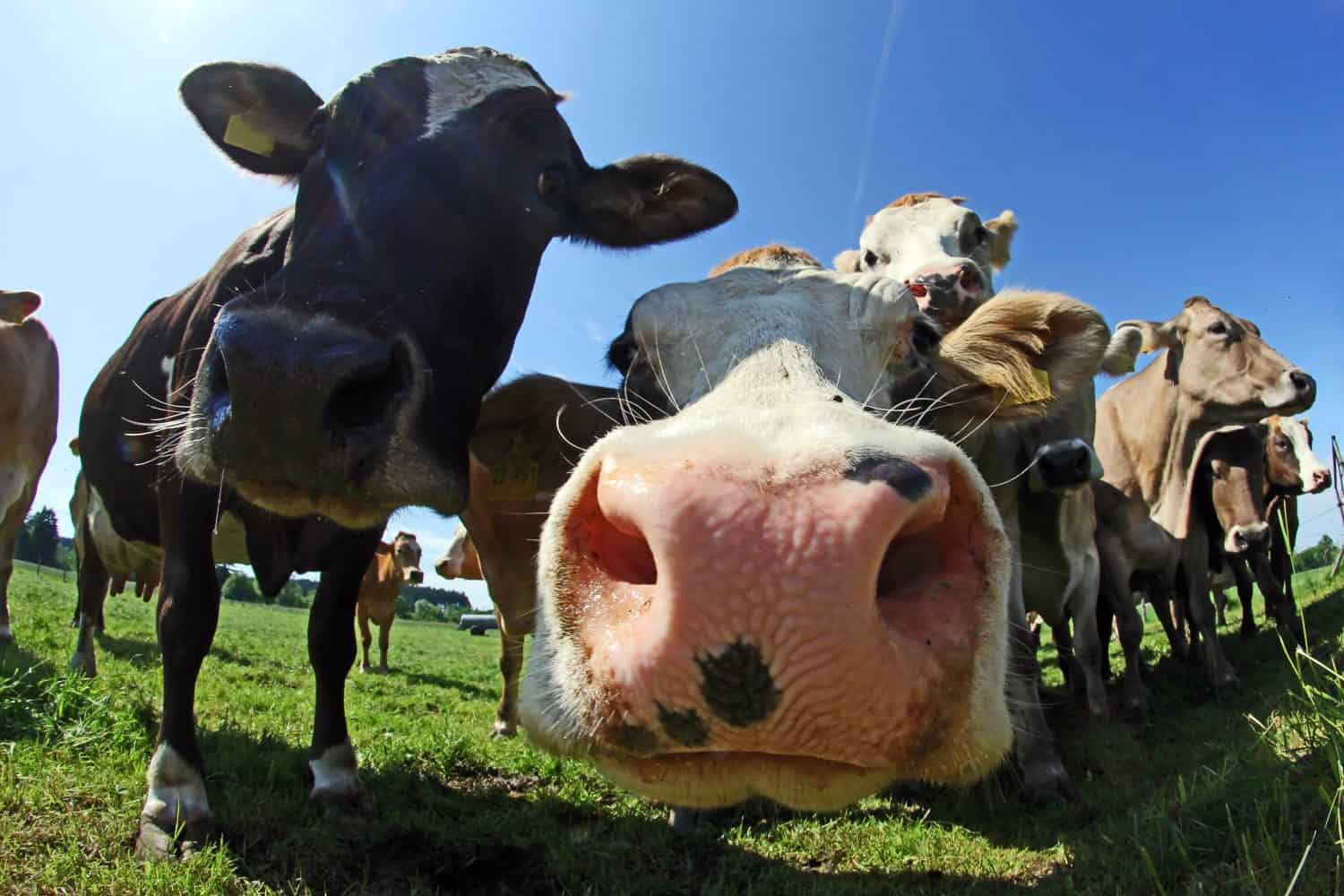
Whiskers help cows recognize food like fruits and clumps of grass or grain.
©Astrid Gast/Shutterstock.com
Most of Earth’s land mammals are ungulates or hooved animals. They include animals such as horses, rhinoceroses, cows, sheep, and giraffes. These are all whiskered animals. Like other mammals, ungulates use their whiskers for foraging and navigation. Some of them, such as deer and horses, have fewer whiskers and no muscular control over them.
6. Elephants
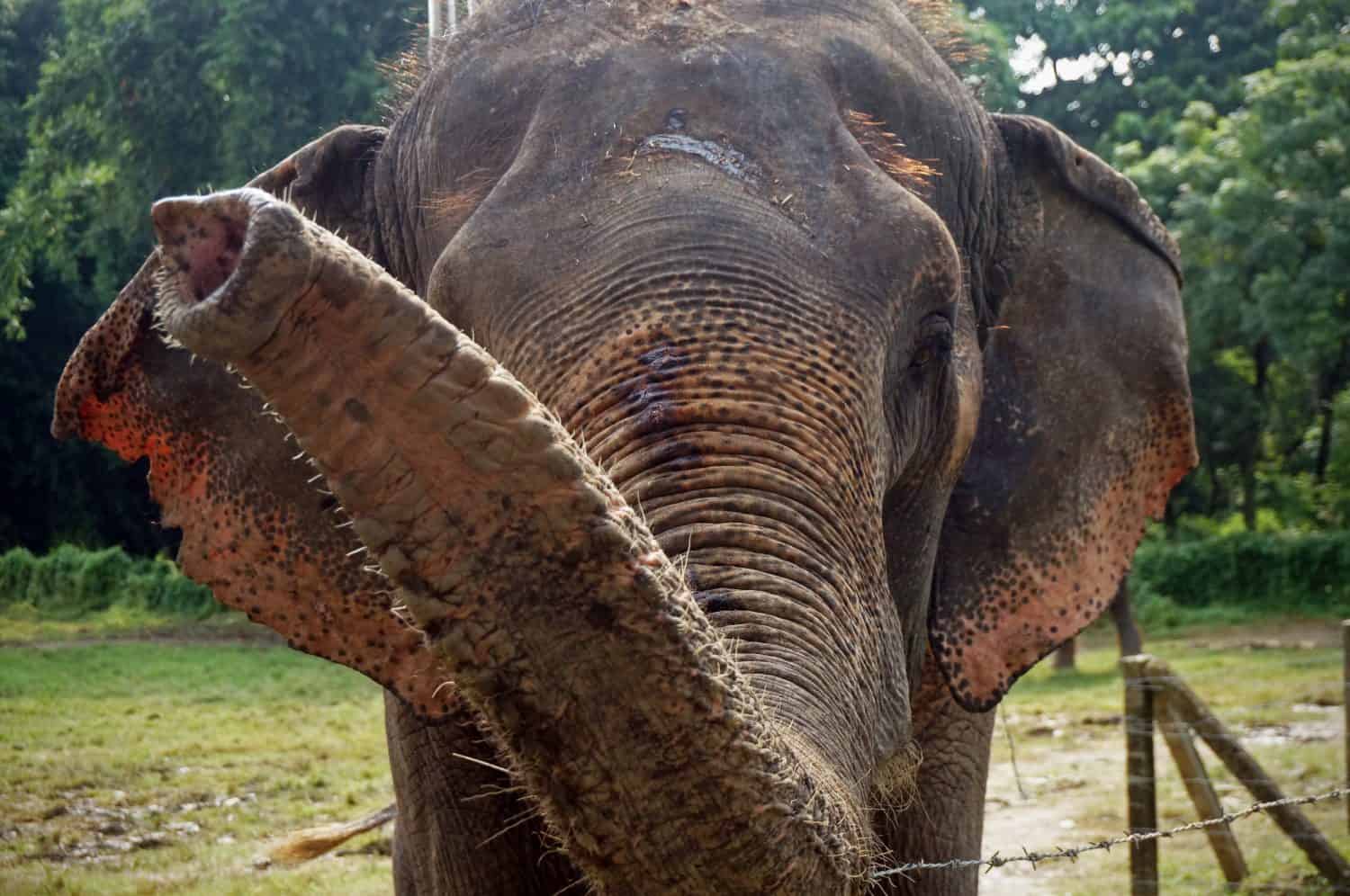
Asian elephants have fewer whiskers than African elephants.
©KhimaTh/Shutterstock.com
Elephants have whiskers along their trunks. The whiskers are concentrated around the trunk tip. These hairs make the trunk extra touch-sensitive. Elephants have special whiskers that are larger and are arranged differently than those of other species. Scientists believe that as the elephant’s trunk evolved to become a specialized touch organ, so did its whiskers.
7. Marsupials

Like other marsupials,
kangaroos
have sensitive whiskers that help them understand their environment.
©noBorders – Brayden Howie/Shutterstock.com
Marsupials like kangaroos, koalas, wombats, and opossums have whiskers, too! Baby kangaroos are born with whiskers, which they use to find their way out of their mother’s pouch.
8. Primates
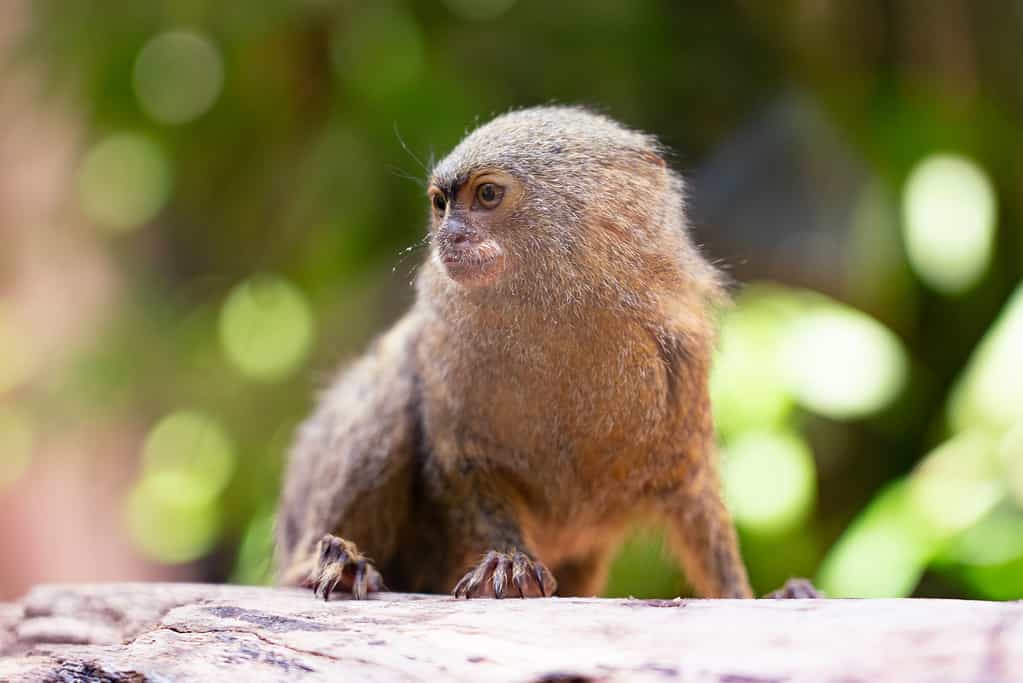
Marmosets have whiskers around their eyes, nose, and lips.
©Chris Lang/iStock via Getty Images
Don’t be fooled by your neighbor’s impressive beard—humans do not have whiskers. Homo sapiens is the only primate species that lacks them. Our mammalian ancestors had whiskers, but ours were lost to evolution. We do still have vestigial whisker muscles around our top lips. (The only other mammals with no whiskers are the monotremes [the echidna and the platypus].)
From the largest mountain gorilla to the tiniest mouse lemur, all of our primate cousins do have whiskers. Like other mammals, many primates use their whiskers to find food, navigate, and help with social interactions. Diurnal primates tend to have fewer whiskers and little muscle control over them. In contrast, nocturnal primates, who need more help navigating the dark world, tend to have more whiskers and intrinsic muscle control over them.
9. Birds

Many insect-catching birds, like this flycatcher, have rictal bristles, but there is no evidence linking the bristles to prey capture.
©Ricardo.Flores/Shutterstock.com
Many different types of birds have rictal bristles, a kind of vibrissae that are hairlike feathers. About one-third of bird species have rictal bristles. Scientists think that these whisker-like structures may help birds navigate and forage. However, no one is yet certain of their function. Owls, flycatchers, eagles, bluebirds, and many other birds have rictal bristles.
10. Fish
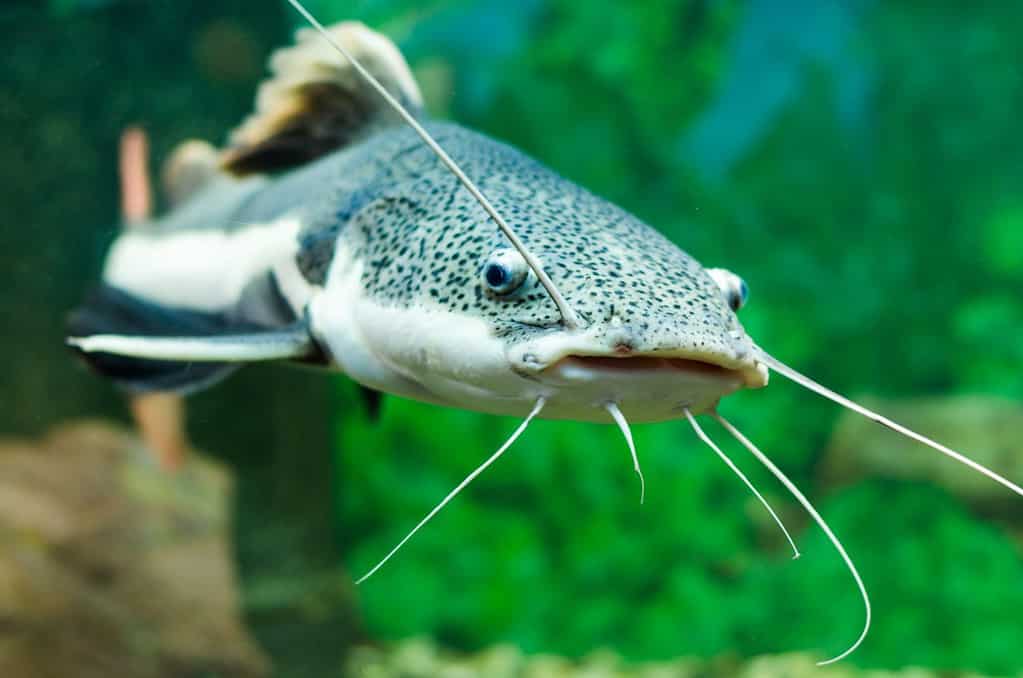
Catfish
drag their barbels along the ground underwater to find food.
©Bk87/Shutterstock.com
Some fish have whisker-like structures of their own, called barbels. Like whiskers, barbels help fish sense what is around them. They are sensitive, but they are fleshy rather than being a type of hair. Fish can use their barbels to touch and taste! Catfish, sturgeon, carp, and other fish have barbels.
| Number | Animal Type | Example Animals |
|---|---|---|
| 1. | Carnivora | Cats, raccoons, seals |
| 2. | Rodents | Mice, squirrels, chinchillas |
| 3. | Bats | Insect-feeding bats, nectar-feeding bats |
| 4. | Cetaceans | Dolphins, whales |
| 5. | Ungulates | Cows, giraffes, horses |
| 6. | Elephants | African elephants, Asian elephants |
| 7. | Marsupials | Kangaroos, wombats, opossums |
| 8. | Primates | Gorillas, marmosets, lemurs |
| 9. | Birds | Flycatchers, owls, eagles |
| 10. | Fish | Catfish, sturgeon, carp |
The photo featured at the top of this post is © Aleksei Verhovski/Shutterstock.com
Thank you for reading! Have some feedback for us? Contact the AZ Animals editorial team.







